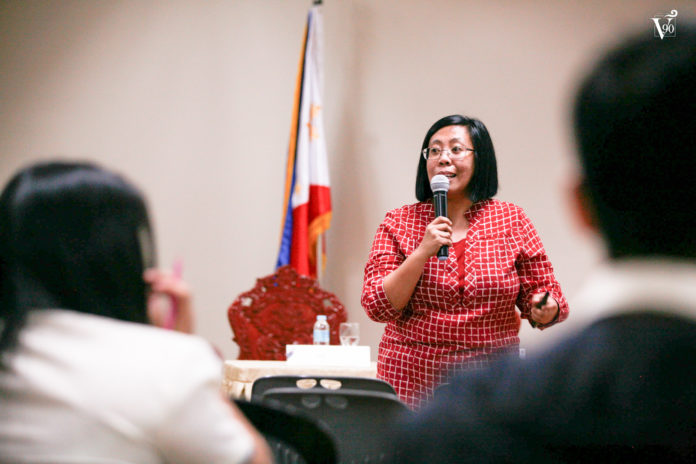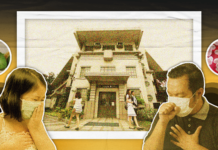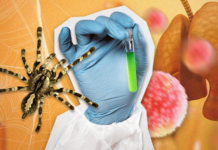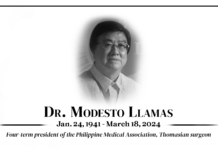
A UST researcher on folk medicine said gumamela, an antirheumatic plant used by various indigenous groups as traditional medicine, should be included as among the sources for medical development.
Carol Pablo, a researcher and associate professor at the Faculty of Pharmacy, cited in her research the use of: (1) Gumamela for boil or pigsa, (2) Homalomena philippinensisor Payau, an antirheumatic ointment extracted from the root of the plant and (3) unnamed plant that is used for womb cleansing, which generally has properties that induce abortion.
“They use medicinal herbs because of its availability and their location, [where] the country’s healthcare system does not reach them,” she told the Varsitarian.
Pablo said the country’s indigenous groups had unique and different systems of practicing traditional herbal medicine. Some of the common procedures they followed to prepare the herbs were pulverization, poultice preparation, decoction, and infusion.
Poultice is a pasty preparation of plants for external application. It is applied to skin while hot for a considerable amount of time to treat inflamed body parts, while decoction and infusion are used to prepare drinkable remedies.
Gumamela petals are holed in the middle, placed on the boil’s “eye” and applied until the petal starts to dry. The Payau is also used as bandage for wounds.
“Many don’t realize that most of the [herbal plants] can actually be found in the kitchen,” Pablo said.
Besides the uncommon plants, three of the most important and frequently used plants of the indigenous group of I’waks in Nueva Viscaya are (1) guava, (2) calamansi and (3) tangan or castor oil plant which is commonly used for burns and wounds, she noted.
Save and preserve
Pablo explained that indigenous medical knowledge was the source of drug discovery, but their practices were only known and passed down to succeeding generations through word-of-mouth and were forgotten due to modernization, forest degradation and other activities.
“Government and research institution should support and encourage more scientific tests to complement the use of the alternative and herbal medicine, that are upheld by the longest time the indigenous groups use it,” she said. “Militarization which destroys the environment, forces the [indigenous groups] to evacuate as well.”
According to the University of the Philippines National Health Institute, six out of 10 Filipinos die without ever seeing a doctor due to financial constraints.
In 1997, former president Fidel Ramos institutionalized the use of alternative and traditional or the Republic Act 8423, also known as Traditional and Alternative Medicine Act of 1997. It sought to accelerate the development of traditional and alternative health-care in the Philippines, to provide an effective and affordable health care option considering the approximately 110 indigenous communities, like the Aetas in Bataan, Higoanon tribe in Misamis Oriental and Lumads from Mindanao.
Pablo encouraged more people from the academe, especially those who came from ethnic groups, to further propagate the study.
Pablo’s research covers the medicinal practices of Higaonon tribe in Misamis Oriental, Aetas in Hermosa, Bataan and I’waks tribe in Nueva Viscaya.













